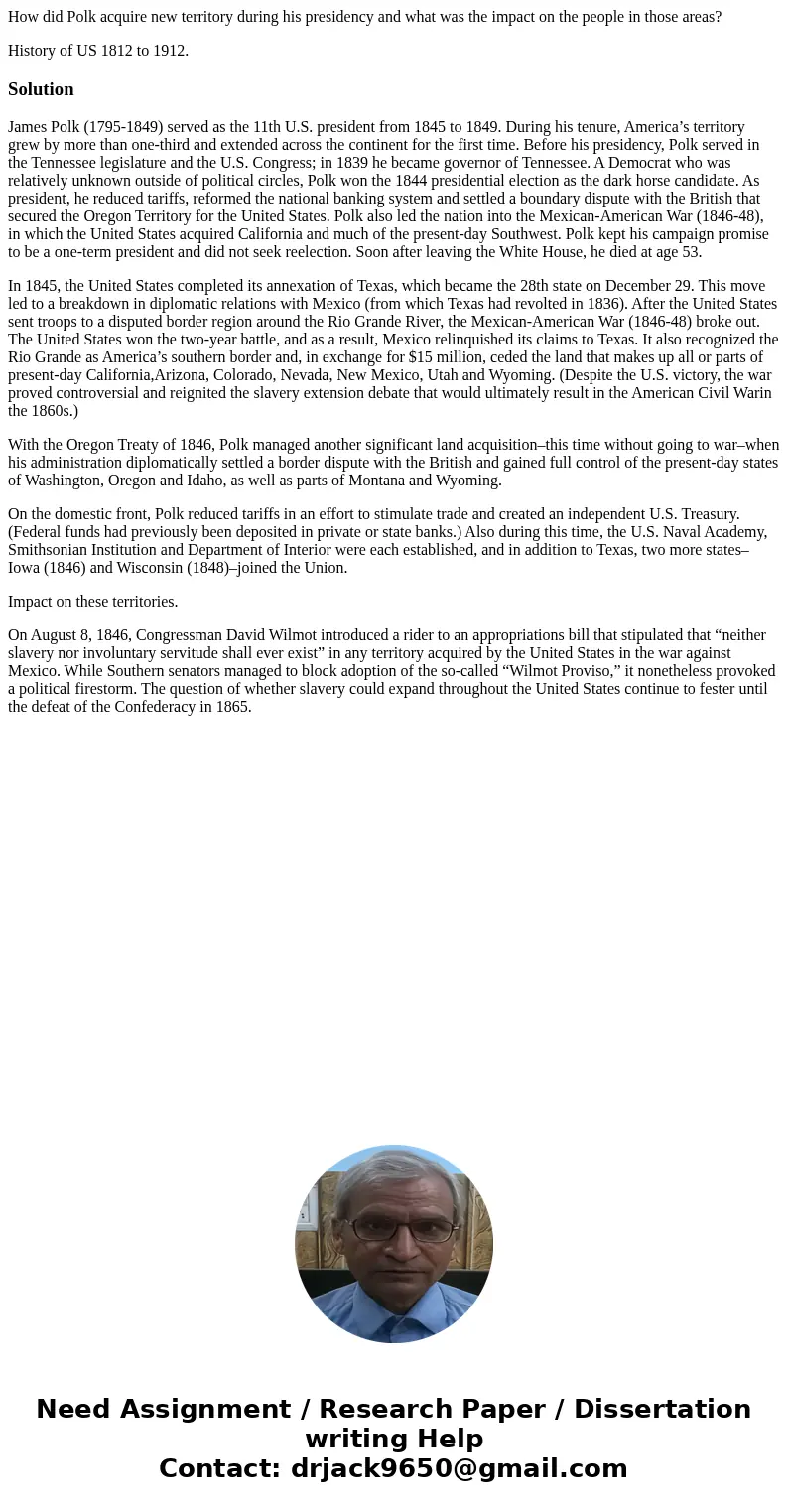How did Polk acquire new territory during his presidency and
How did Polk acquire new territory during his presidency and what was the impact on the people in those areas?
History of US 1812 to 1912.
Solution
James Polk (1795-1849) served as the 11th U.S. president from 1845 to 1849. During his tenure, America’s territory grew by more than one-third and extended across the continent for the first time. Before his presidency, Polk served in the Tennessee legislature and the U.S. Congress; in 1839 he became governor of Tennessee. A Democrat who was relatively unknown outside of political circles, Polk won the 1844 presidential election as the dark horse candidate. As president, he reduced tariffs, reformed the national banking system and settled a boundary dispute with the British that secured the Oregon Territory for the United States. Polk also led the nation into the Mexican-American War (1846-48), in which the United States acquired California and much of the present-day Southwest. Polk kept his campaign promise to be a one-term president and did not seek reelection. Soon after leaving the White House, he died at age 53.
In 1845, the United States completed its annexation of Texas, which became the 28th state on December 29. This move led to a breakdown in diplomatic relations with Mexico (from which Texas had revolted in 1836). After the United States sent troops to a disputed border region around the Rio Grande River, the Mexican-American War (1846-48) broke out. The United States won the two-year battle, and as a result, Mexico relinquished its claims to Texas. It also recognized the Rio Grande as America’s southern border and, in exchange for $15 million, ceded the land that makes up all or parts of present-day California,Arizona, Colorado, Nevada, New Mexico, Utah and Wyoming. (Despite the U.S. victory, the war proved controversial and reignited the slavery extension debate that would ultimately result in the American Civil Warin the 1860s.)
With the Oregon Treaty of 1846, Polk managed another significant land acquisition–this time without going to war–when his administration diplomatically settled a border dispute with the British and gained full control of the present-day states of Washington, Oregon and Idaho, as well as parts of Montana and Wyoming.
On the domestic front, Polk reduced tariffs in an effort to stimulate trade and created an independent U.S. Treasury. (Federal funds had previously been deposited in private or state banks.) Also during this time, the U.S. Naval Academy, Smithsonian Institution and Department of Interior were each established, and in addition to Texas, two more states–Iowa (1846) and Wisconsin (1848)–joined the Union.
Impact on these territories.
On August 8, 1846, Congressman David Wilmot introduced a rider to an appropriations bill that stipulated that “neither slavery nor involuntary servitude shall ever exist” in any territory acquired by the United States in the war against Mexico. While Southern senators managed to block adoption of the so-called “Wilmot Proviso,” it nonetheless provoked a political firestorm. The question of whether slavery could expand throughout the United States continue to fester until the defeat of the Confederacy in 1865.

 Homework Sourse
Homework Sourse